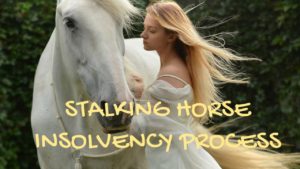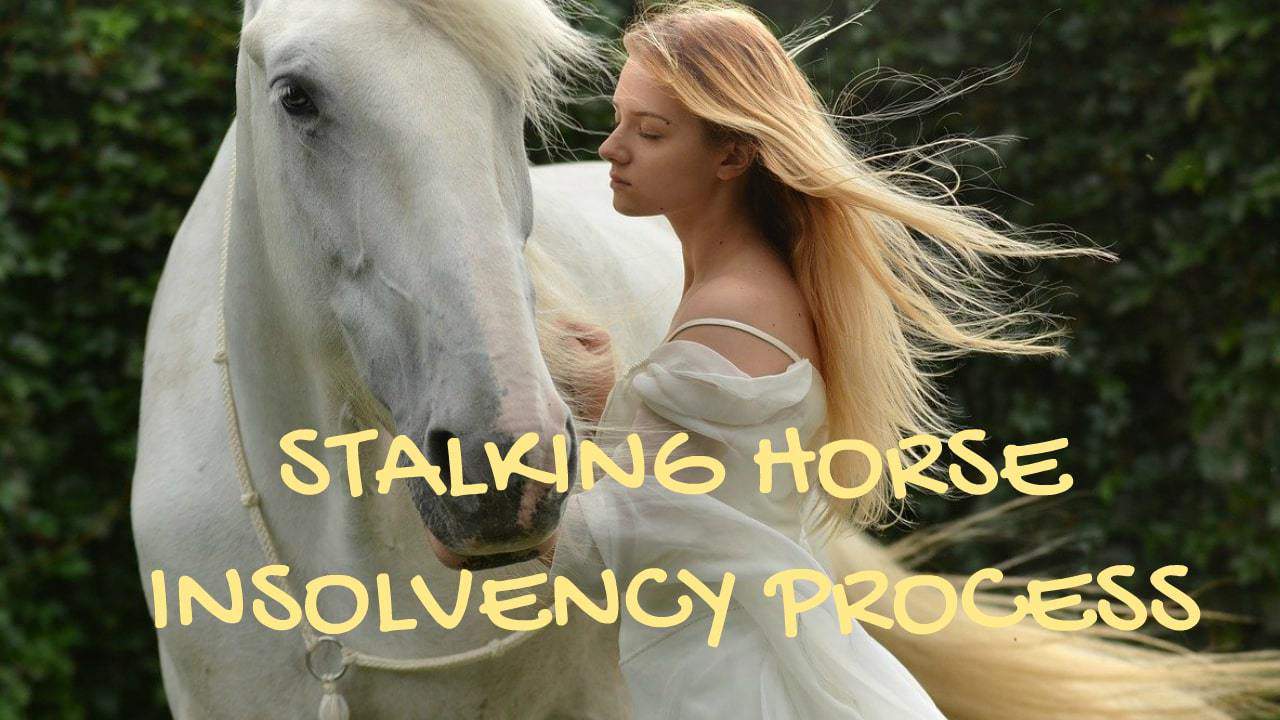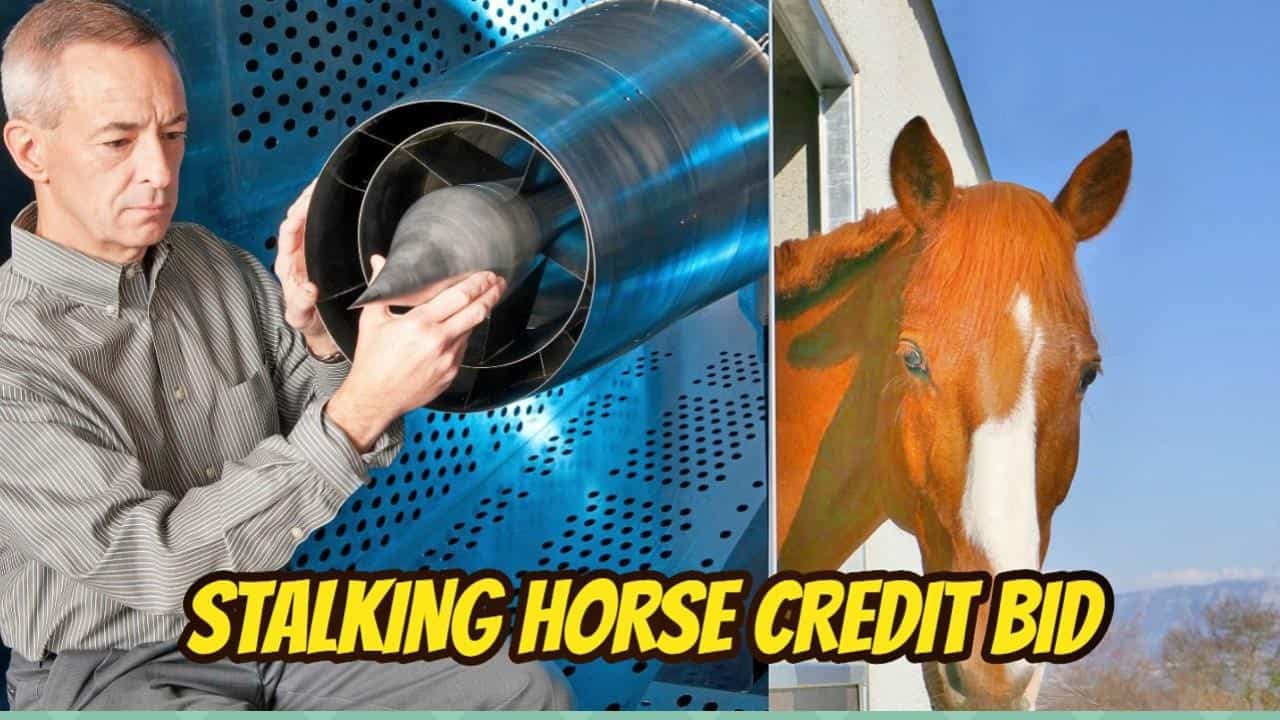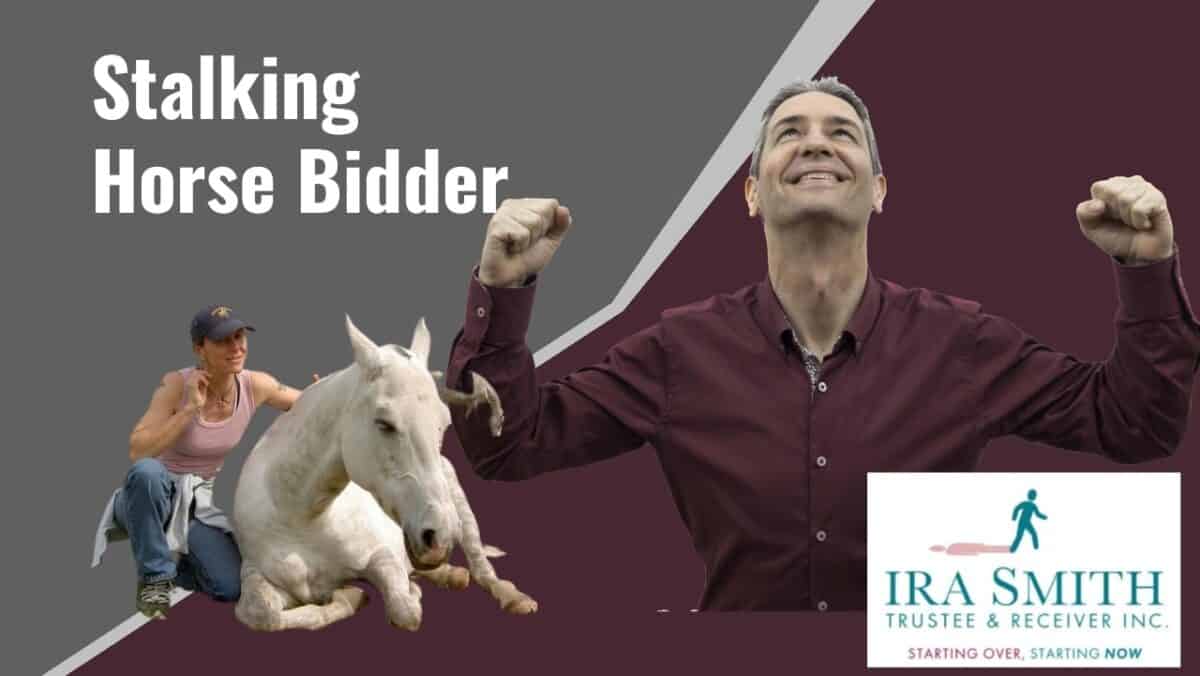The Ira Smith Trustee Team is absolutely operational and Ira, in addition to Brandon Smith, is readily available for a telephone consultation or video meeting. We hope that you and your family are safe and healthy.
If you would like to listen to an audio version of this stalking horse insolvency process Brandon’s Blog, please scroll to the bottom and click on the podcast.
Stalking horse introduction
I have written before about a stalking horse in the insolvency context. Two things recently happened that suggested that I should write about it again, from a slightly different perspective. The first thing was that Ira Smith recently did a Zoom webinar presentation for the M&A Club Canada. The topic they wanted the webinar on and the title of the webinar was “Insolvency restructuring to get your M&A deal done”. Second, I see that there has been an increase in online searches for that term.
So, the purpose of this Brandon’s Blog is to describe what a stalking horse is and provide you with some insight as to how an insolvency process can be used to get an M&A deal done.
What is a stalking horse in the insolvency and M&A world?
In the distressed M&A context, a stalking horse refers to a possible buyer participating in a stalking horse auction to purchase the assets of an insolvent debtor as a going concern. In a stalking horse public auction of a financially troubled business, an initial bid by the stalking horse bidder is divulged to the marketplace and becomes the minimum quote, or floor cost, that potential purchasers can then outbid.
It was first extensively utilized in the USA and currently is a routine part of the Canadian insolvency landscape. The stalking horse process is different than the sealed tender sale approach that is traditional in Canada. The stalking horse sales process has been used in Canada many times. The case study that Ira presented in his webinar and gone over below, was one that the Ontario Superior Court of Justice approved.
The stalking horse participates in the process understanding that it might be outbid. Accordingly, it negotiates a break fee to cover its costs. This includes its due diligence costs to put together the first offer. Typically, for a competing bid to knock out the stalking horse offer, it will certainly have to be more than the stalking horse bid plus the Break Fee (described below). The competing offer will certainly likewise need to be on the exact same terms as the stalking horse bid, and cannot include any kind of burdensome conditions.
Why would anyone want to become a stalking horse?
So, why would someone want to be a stalking horse? Initially, as a stalking horse, you will certainly have the most effective opportunity of discussing the terms of a purchase that are customized to satisfy your specific issues. Also, as the first prospective buyer, you will have even more time to evaluate and comprehend the insolvent debtor’s company. You will also have a chance to develop connections with management, vendors, and key stakeholders in the sales process. This gives the stalking horse bidder a leg up.
Their expenses of participating in the sales procedure are covered by the break fee that you will negotiate. That break fee is generally secured by a unique court-ordered charge against the assets of the insolvent debtor. However, you will need to consider the ranking of this charge against other charges that may have been already granted by the court.
How a stalking horse bid works
The stalking horse method permits a distressed company to prevent receiving reduced proposals as it sells its assets. When the stalking horse prospective buyer has made its deal, the court has accepted that quote and all other conditions of the court-supervised sale, other prospective purchasers may send contending bids for the company’s assets.
By setting the low end of the bidding process, the insolvent firm wishes to realize a greater price, yet understands it cannot obtain a lower one. Insolvencies are public. The general public nature allows for the disclosure of even more information about the opportunity and the company than what would certainly be available in a private deal. Because of this, in this case study, I explain below, I can mention some names.
Stalking horse prospective buyers can typically bargain which specific assets it wishes to obtain. It likewise does not have to acquire any of the insolvent business’s liabilities. It may however choose for business reasons to take some on voluntarily. Examples would be amounts owing to critical suppliers or employment-related liabilities for employees of the insolvent company they may wish to retain.
MPH Graphics stalking horse bid process case study
MPH Graphics inc. (MPH) was an insolvent company. They had a potential purchaser who was willing to stand as a stalking horse bidder. We ran a successful stalking horse process in this case. This case happened quite a few years ago, but, since then, we have used the identical technique in other cases. When a similar kind of case comes up in the future, we would use the same process. So, although the case is older, the steps taken are still well suited today.
MPH was a company that provided printing design and finishing for Canadian and US customers. MPH printed a variety of products such as business cards, direct mail pieces, annual reports, and marketing materials and primarily serviced government agencies, not for profit organizations, and unions.
MPH grew by acquisitions and required additional capital equipment financed by debt. The business also had to change because the industry was changing from traditional printing presses to digital. That changeover required further capital investment.
MPH was insolvent
MPH’s line of business primarily serviced government agencies, not for profit organizations, and unions. Absorbing the acquisitions produced inefficiencies and redundancies. It also needed to move to larger premises which meant moving costs and higher ongoing rent costs were being incurred.
At the same time, the industry was extremely pricing competitive. Gross margins were squeezed. Overhead costs, especially sales salaries and entertainment expenses increased. There was now a history of losses. The technical staff was very experienced. To get the union business, MPH’s technical side had to be a union shop. MPH had a blue-chip client list, which is what was really of interest to the stalking horse bidder.
Receivable collections were slowing down and the bookkeeper had to put payable cheques that were printed every month in a drawer. The cheques could not be released because there was not enough money to pay their liabilities as they become due.

The stalking horse bidder came knocking
The bidder was an industry consolidator. They came knocking to try to buy the MPH assets. The consolidator did its due diligence and issued a non-binding letter of interest. After further discussions, that interest turned into a binding agreement to purchase the assets. One of the terms of the deal was that the stalking horse bidder required court approval of the purchase and a vesting order from the court to vest the assets out of MPH into the acquiring corporation.
Notwithstanding there were tax losses, the purchaser did not want to purchase shares and have to deal with all the creditor issues. The company could not on its own give the purchaser the certainty it wanted by way of a vesting order. So an insolvency process was required.
What kind of stalking horse insolvency process?
There are generally three insolvency options. Some are not necessarily mutually exclusive. They are:
- receivership;
- bankruptcy; and
- restructuring.
Receivership is a remedy for secured creditors. In a receivership, the company loses control of the sales process. Bankruptcy is a remedy for unsecured creditors. In bankruptcy, likewise, the company loses control. It needed a process where the company stays in control.
The insolvent company’s requirements were:
- stay in control of the process;
- do that specific transaction or a better one; and
- get court protection for both the sales process and the sale.
So neither receivership nor bankruptcy would work. So what would allow the company to meet its requirements and run a stalking horse bid process?
A stalking horse process works best in an insolvency restructuring process
What is needed is a debtor in possession option. In the United States, it is called a Chapter 11 proceeding. In Canada, there are two federal statutes that apply and can accommodate the needed process:
- Liquidating Proposal under the Bankruptcy and Insolvency Act (Canada) (BIA).
- Liquidating Plan of Arrangement under the Companies’ Creditors Arrangement Act (Canada) (CCAA).
The benefits of this approach are:
- The company stays in control of the process.
- It allows for the stalking horse transaction or a better one to be completed.
- Allows the insolvent company to get protection from its creditors through the automatic stay of proceedings. This gives it the time to run the stalking horse process, go back to court for approval, and to complete a transaction.
Liquidating proposal under the BIA to run the stalking horse process
We chose the strategy of a proposal filing under the BIA. The main reason was that the CCAA is for companies that owe $5 million or more. MPH owed under that threshold, so only the BIA process was available. The strategy would have been the same, even if MPH qualified for a CCAA process and we decided to go under that statute.
As time was of the essence, we MPH first filed a Notice of Intention to Make a Proposal (NOI). This quickly got them the stay of proceedings they needed and access to the court, before needing to draft the definitive proposal document.
The company filed the NOI to implement a sale of its assets, properties, and undertaking, in order to attempt to preserve as much value as possible for the Company’s stakeholders, while preserving as many jobs as possible. As Trustee, we then wrote a report to the court in support of the company’s motion to get the purchaser’s agreement of purchase and sale to be approved as a stalking horse bid and for approval of a sales process, we would run.
As Trustee, we worked with MPH, the purchaser, and their respective legal counsel, to draft the sales process and the terms and conditions of sale. These would be the rules that would allow for the marketplace to become aware of the opportunity to purchase all or substantially all of the assets, properties, and undertaking of MPH.
Key elements of the stalking horse sales process
The key elements of the stalking horse sales process were:
- The break fee payable to the stalking horse bidder if they turned out to not be the successful purchaser was set at the amount of $100,000.
- The Overbid Amount (as described in the Stalking Horse Agreement of Purchase and Sale) was reduced to the amount of $100,000.
- If an auction was to be held between parties that all qualified as successful bidders, each bid had to be at least $5,000 higher than the last one.
The outcome of the stalking horse sales process
The process we recommended to the court was a 5-week process. The court approved our recommendations and ran the sales process. The process included:
- Advertising the opportunity in a national newspaper.
- Preparing and distributing a “teaser” non-confidential information circular to distribute to anyone who requested it along with the terms and conditions of sale.
- Preparation and distribution of a confidentiality agreement to those who wished more detailed financial information.
- Receipt of signed confidentiality agreements and distribution of the confidential information memorandum we prepared.
- Receiving non-binding letters of intent from potential purchasers and deciding which ones we chose to provide access to our electronic data room.
- Potential purchasers performed due diligence and submitted their final binding offers with deposit funds.
We then reviewed all offers received, to make sure that they met the terms and conditions of sale. We did receive a better offer, but that purchaser’s offer was conditional on them obtaining financing. They could not waive the condition, so the stalking horse bidder’s agreement of purchase and sale turned out to be the winning bid.
Court approval of the stalking horse bid
As Trustee, we then prepared our report to court to provide all the information as to the steps we took and the results of the process. We obviously recommended that the company be allowed to complete the stalking horse agreement. The court agreed and issued the vesting order.
There were enough funds to pay out the government trust claim and all the secured creditors in full. There was also enough cash left over to pay for all the costs of the process. Unfortunately, there was not enough money to do any sort of proposal. So the company filed an assignment in bankruptcy and we became the trustee in bankruptcy.
Moving from our role as proposal trustee to the bankruptcy trustee, we informed all the creditors the details of the sale and the outcome. The business and many jobs were saved as a result.
Stalking horse summary
I hope you have enjoyed this stalking horse Brandon’s Blog. Hopefully, you have better insight now into the fact that a sick insolvent company’s business can be saved by doing a sale of its assets to a healthy organization.
Do you have too much debt? Are you in need of financial restructuring? The financial restructuring process is complex. The Ira Smith Team understands how to do a complex restructuring. However, more importantly, we understand the needs of the entrepreneur or the person who has too much personal debt.
You are worried because you are facing significant financial challenges.
It is not your fault that you are in this situation. You have been only shown the old ways that do not work anymore. The Ira Smith Team uses new modern ways to get you out of your debt troubles while avoiding bankruptcy. We can get you debt relief freedom.
The stress placed upon you is huge. We understand your pain points. We look at your entire situation and devise a strategy that is as unique as you and your problems; financial and emotional. The way we take the load off of your shoulders and devise a debt settlement plan, we know that we can help you.
We know that people facing financial problems need realistic lifeline. There is no “one solution fits all” approach with the Ira Smith Team. That is why we can develop a restructuring process as unique as the financial problems and pain you are facing. If any of this sounds familiar to you and you are serious in finding a solution, contact the Ira Smith Trustee & Receiver Inc. team today.
Call us now for a free consultation.
We will get you or your company back on the road to healthy stress-free operations and recover from the pain points in your life, Starting Over, Starting Now.
The Ira Smith Trustee Team is absolutely operational and Ira, in addition to Brandon Smith, is readily available for a telephone consultation or video meeting. We hope that you and your family are safe and healthy.






